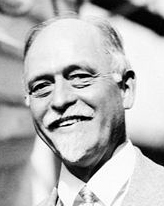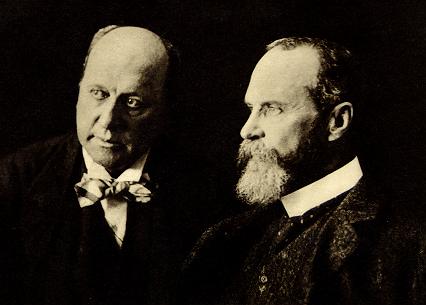"Why Not Negative Interest Rates?
Thursday, May 21, 2009
Filed under: Economic Policy, Big Ideas
John Makin’s April Economic Outlook observed that with the theoretically right monetary policy for present economic circumstances, the fed funds rate would be significantly negative. However, we run up against the famous “zero bound” thesis for interest rates—that it is impossible for them to be below zero.
This is frequently stated, but is it true? Why could we not have negative nominal interest rates to combat a potential deflation? This natural question arises and gets debated from time to time over the years among financial and monetary thinkers. In recent weeks, Greg Mankiw (“It May Be Time for the Fed to Go Negative”) and Willem Buiter (“Negative Interest Rates: When Are They Coming to a Central Bank Near You?”) have raised it again. Says Buiter, “I agree with Greg Mankiw that it is time for central banks to stop pretending that zero is the floor for nominal interest rates.”
In fact, there are some historical examples of negative interest rates.
“From early August to mid-November of 2003, negative interest rates occurred on certain U.S. Treasury repurchase agreements,” according to economists Michael Fleming and Kenneth Garbade. “This episode refutes the popular assumption that interest rates cannot go below zero,” they say.
Daniel Thornton reported in 1999 in a St. Louis Federal Reserve note that “several foreign-owned banks in Japan have paid negative nominal interest rates on yen deposits.”
One of the most notable features of the present crisis has been the explosion of banks simply keeping their money on deposit at the Fed. During 2008, these deposits increased by a factor of more than 40.
In 1972, the Swiss central bank imposed negative interest rates on Swiss franc deposits by foreigners. This was to reduce the flow of money into Swiss francs, which was driving up the foreign exchange value of the currency against the central bank’s desires. The charge was up to 10 percent per quarter, or 40 percent per annum—negative interest rates with a vengeance! They were again imposed, for the same reason, from 1977 to 1979.
Further back, Sidney Homer’s classic, A History of Interest Rates, reports that Treasury bill rates were sometimes negative in 1940 and 1941. “Treasury bill yields were sometimes quoted at 0.001% and occasionally sold at negative yields,” Homer wrote, “because they were exempt from the personal property taxes of some states.” In other words, the personal property tax created effective negative yields on other assets, allowing actual negative yields on Treasury bills.
It might be argued that these instances are special cases. Suppose we wish to discourage the holding of cash or Treasury bills in general, and to encourage investors to spend or invest instead—could it be done by creating negative interest rates more broadly?
The classic argument is that the possibility of simply switching to paper currency, which by definition circulates at par (a zero interest rate), is what makes a generalized negative interest rate on deposits or securities impossible. As Buiter says about creating negative interest rates, “Currency is the only problem.” We will return to the problem of currency in a moment.
But let’s begin with Treasury bills. Imagine a financial panic, when everybody wants to own Treasury bills, no matter what the yield. Now along comes the Fed, with its infinitely expandable balance sheet, and bids for 90-day bills until their price reaches 100.5, for example, or 101. Their interest rate is now about negative 2 percent or 4 percent.
A negative interest rate on excess reserves would result in a disincentive to hold Fed deposits, which would increase the banks’ incentive for the funds to be put out in the interbank market or the commercial paper market or in loans instead.
How would banks respond? There would be no point in buying Treasury bills if they could simply hold excess reserves at the Fed instead. This is the banking equivalent of putting banknotes in the mattress: “Many banks prefer to hoard cash,” is a recent analyst’s comment. Indeed, one of the most notable features of the present crisis has been the explosion of banks simply keeping their money on deposit at the Fed. During 2008, these deposits increased by a factor of more than 40: from $21 billion to $860 billion.
But it would be straightforward for the Fed to put a negative interest rate on these excess reserves, just as the Swiss did on foreign deposits. The resulting disincentive to hold Fed deposits would increase the banks’ incentive for the funds to be put out in the interbank market or the commercial paper market or in loans instead—yes, that’s the idea.
Could the banks in turn put negative interest rates on customers’ deposits with them? They might not have to if they were doing something with the money besides holding risk-free assets, but in principle they could. Something similar is done by charging fees on demand deposits.
It looks like the depository system could conceptually include negative interest rates. But how about if everybody just took out currency instead? Would this not defeat the whole idea? Such discussions always arrive at this objection.
This leads to various more or less cumbersome and impractical schemes for imposing costs on holding currency to take away its advantage in a world of negative interest rates on deposits. A classic one is to require tax stamps to be put on banknotes periodically. But are these necessary for the negative interest rate idea?
It is easy to imagine converting deposits to cash for very little cost and risk if we are thinking about relatively small amounts and personal transactions. But dealing with very large amounts of cash in commercial transactions entails very large costs and risks. Would negative interest rates induce a company with 200,000 employees, for example, to stop its automatic payroll deposit system and start passing out envelopes full of cash instead? Would the Social Security Administration start mailing its pensioners similar envelopes? Obviously not. And the Fed could put hefty charges on banks taking more than a standard level of currency from it.
Moreover, there is simply not nearly enough existing currency to replace all deposits. Even if the government did not go as far as abolishing currency (one suggestion), it could refuse to increase the supply. What then? Some hoarding of currency would result, reducing the available supply further, and then currency would presumably go to a premium against deposits. You could still make all the payments you need to, but you could either bear your negative interest rate by holding deposit cash, or have to pay a premium if you insisted on banknote cash. Or you might buy gold. Or you might spend it or make some investments in bonds or stocks or a house—again, that’s the idea.
The increasing dependence on electronic payments makes a massive move to currency less feasible and thus negative interest rates more plausible.
Would anybody rationally pay $1.02 for $1.00 in cash? They do today, if they take cash as a non-customer from an ATM. The average ATM surcharge fee is about $2. For a $100 withdrawal, that is equivalent to a price of $1.02. Alternately thought of, if a $200 withdrawal were cash for one month, the average fee would be equivalent to a negative 12% interest rate.
In general, the increasing dependence on electronic payments makes a massive move to currency less feasible and thus negative interest rates more plausible.
Still, one can imagine the unhappy customers being informed they could not withdraw currency from a human teller at par. And one can consider what the political reaction to such effects of negative interest rates might be.
In sum, could negative interest rates “come to a central bank near you”? It may seem unlikely, but it is not impossible.
Alex J. Pollock is a resident fellow at the American Enterprise Institute.







































No comments:
Post a Comment